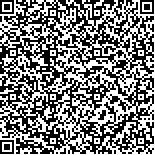| 引用本文: | 周悦悦,钟涛,陈亮,丁科,邓九零,寿旗扬,王慧铭,王辉.血糖波动对自发性2型糖尿病GK大鼠肾脏病变的影响[J].中国现代应用药学,2019,36(6):661-665. |
| ZHOU Yueyue,ZHONG Tao,CHEN Liang,DING Ke,DENG Jiuling,SHOU Qiyang,WANG Huiming,WANG Hui.Effect of Blood Glucose Fluctuation on Renal Lesions in Spontaneous Type 2 Diabetic GK Rats[J].Chin J Mod Appl Pharm(中国现代应用药学),2019,36(6):661-665. |
|
| |
|
|
| 本文已被:浏览 2537次 下载 1496次 |

码上扫一扫! |
|
|
| 血糖波动对自发性2型糖尿病GK大鼠肾脏病变的影响 |
|
周悦悦1, 钟涛2, 陈亮1, 丁科3, 邓九零1, 寿旗扬1, 王慧铭1, 王辉1
|
|
1.浙江中医药大学药学院, 杭州 310053;2.湖州浙北明州医院有限公司, 浙江 湖州 313000;3.浙江省中医院中药房, 杭州 310053
|
|
| 摘要: |
| 目的 研究血糖波动对糖尿病GK大鼠肾脏病变的影响。方法 5只♂ Wistar大鼠作为正常组,10只♂ GK大鼠按体质量、血糖值随机分为糖尿病组、血糖波动组,每组5只。血糖波动组每日错时腹腔注射葡萄糖及皮下注射胰岛素造成日间血糖波动模型,正常组和糖尿病组每日错时腹腔注射等剂量生理盐水,连续6周。每日观察大鼠一般体征;每周称大鼠体质量;第6周末检测全天9个时间点的血糖值;第3,6周末检测糖化血红蛋白值(glycosylated hemoglobin,GHb);收集第6周末24 h尿液,生化法检测尿肌酐(urine creatinine,U-CREA)、尿白蛋白总量(total urine albumin,U-ALB),计算24 h尿蛋白排泄率(urinary protein excretion rate,UAER);6周末,麻醉处死大鼠,心脏取血,生化法检测血清中血尿素氮(blood urea nitrogen,BUN),手工法检测血清超氧化物歧化酶(superoxide dismutase,SOD)、丙二醛(malonaldehyde,MDA)及谷胱甘肽过氧化酶(glutathione peroxidase,GSH-Px);取双肾,称重,计算肾肥大指数,将肾脏置中性甲醛,PAS染色,光镜下观察病理变化。结果 与糖尿病组相比,血糖波动组大鼠GHb、U-CREA、UAER、血清BUN及MDA、肾肥大指数均显著升高(P<0.05),体质量增长速度、血清SOD及GSH-Px均显著降低(P<0.05),大鼠肾脏组织形态出现的肾小球损伤及结构改变更加明显。结论 血糖波动会加重糖尿病GK大鼠肾脏病变,其机制可能与升高MDA水平,降低SOD、GSH-Px水平有关。 |
| 关键词: 血糖波动 糖尿病 GK大鼠 肾脏 |
| DOI:10.13748/j.cnki.issn1007-7693.2019.06.004 |
| 分类号:R965.2 |
| 基金项目:浙江省医药卫生科技项目(2016KYA147);浙江省自然科学基金项目(LY17H270012);湖州市科技计划项目(2017GYB11) |
|
| Effect of Blood Glucose Fluctuation on Renal Lesions in Spontaneous Type 2 Diabetic GK Rats |
|
ZHOU Yueyue1, ZHONG Tao2, CHEN Liang1, DING Ke3, DENG Jiuling1, SHOU Qiyang1, WANG Huiming1, WANG Hui1
|
|
1.School of Pharmacy, Zhejiang University of Traditional Chinese Medicine, Hangzhou 310053, China;2.Huzhou Zhebei Mingzhou Hospital Company, Huzhou 313000, China;3.Chinese Pharmacy, Zhejiang Provincial Hospital, Hangzhou 310053, China
|
| Abstract: |
| OBJECTIVE To study the effect of blood glucose fluctuation on renal pathological changes in diabetic GK rats. METHODS Five male Wistar rats were set as normal group. Ten male GK rats were randomly divided into diabetic group and blood glucose fluctuation group based on body weight and blood glucose level, five rats in each group. In the glucose fluctuation group, intraperitoneal injection of glucose and subcutaneous injection of insulin resulted in a daytime blood glucose fluctuation model for 6 weeks. Normal and diabetic group were intraperitoneally injected with the same daily dose of normal saline for 6 weeks. The general signs of the rats were observed daily, the body weight of the rats was weighed every week, the blood glucose levels at 9 time points were measured at the 6th weekend. The glycosylated hemoglobin value(GHb) was measured at the 3rd and 6th weekends and the 24 h urine was collected at the 6th weekend. Biochemical method was used to detect urine creatinine (U-CREA), total urinary albumin(U-ALB), calculate 24 h urinary protein excretion rate(UAER). After 6 weeks, rats were executed after anesthesia, blood was taken from the heart, and blood urea nitrogen(BUN), manual detection of serum superoxide dismutase (SOD), malondialdehyde(MDA) and glutathione peroxidas(GSH-Px) in serum were detected by biochemical method. Taking kidneys, weighing, calculating renal hypertrophy index, the kidney was placed in neutral formaldehyde, PAS staining, pathological changes were observed under light microscope. RESULTS Compared with diabetics group, GHb, U-CREA, UAER, serum BUN and MDA and renal hypertrophy index in blood glucose fluctuation group was significantly increased (P<0.05), the weight gain rate, serum SOD and GSH-Px were significantly decreased (P<0.05), and renal glomerular injury and structural changes were more obvious. CONCLUSION Blood glucose fluctuation can aggravate renal lesions in diabetic GK rats, which mechanism may be related to increased MDA levels and decreased levels of SOD and GSH-Px. |
| Key words: blood glucose fluctuation diabetic GK rats renal |
|
|
|
|
